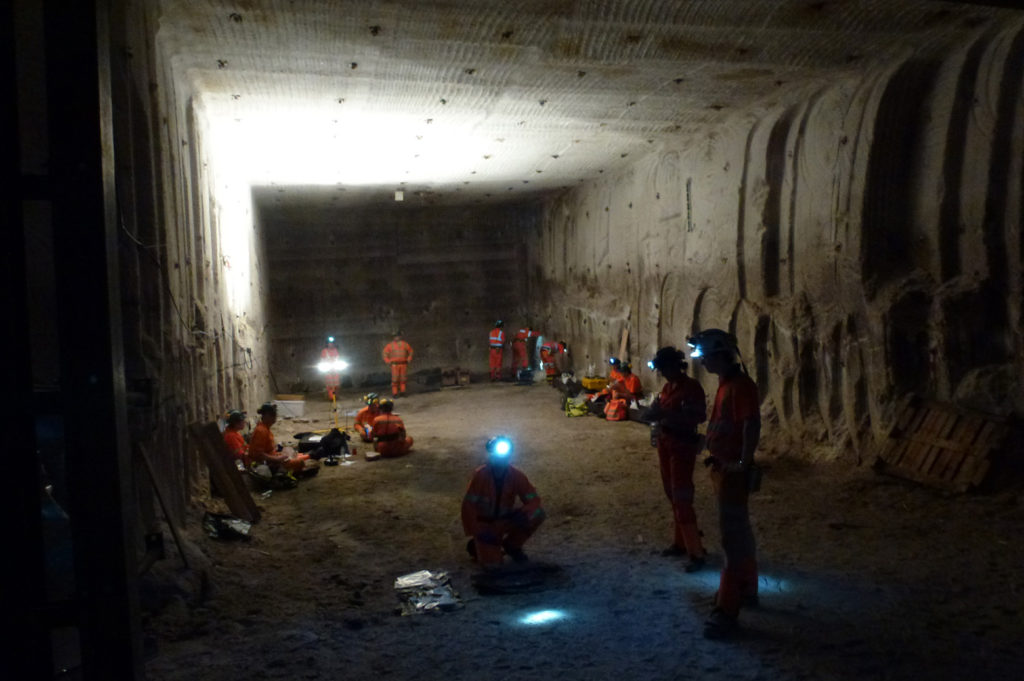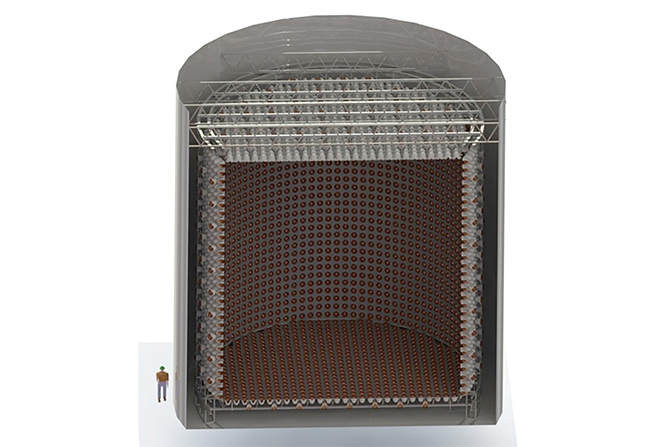
Nuclear nonproliferation: U-M participates in project monitoring nuclear reactors from afar
Secret nuclear power reactors could be detected by capturing elusive antineutrinos.

Secret nuclear power reactors could be detected by capturing elusive antineutrinos.

While the international nonproliferation community inspects known nuclear power reactors, a major concern is that nations could build smaller, secret reactors to produce materials for weapons. Now, University of Michigan researchers are involved in an effort to build a prototype of a detector that may one day identify undeclared sites from a neighboring country.
The initiative, known as the Advanced Instrumentation Testbed (AIT), seeks to detect nearly-massless particles produced when a nuclear reactor is running. In addition to revealing the presence of secret reactors, these particles can signal when nuclear reactors are running or shut down. The on/off cycle can indicate whether reactors are being used to produce energy or plutonium, a metal that provides explosive power in nuclear weapons.
The program is sponsored by the Department of Energy’s National Nuclear Security Administration and is led by Lawrence Livermore National Laboratory (LLNL), with the participation of other universities and national laboratories.

“This initiative is impressive in its ambition, scale and potential for impact on global nuclear security,” said Igor Jovanovic, a professor of nuclear engineering and radiological sciences at U-M. “Involvement in this effort presents a fertile ground for developing new ideas and directions in the nonproliferation arena, in which our students will play a major role.”
The heart of the project is the antineutrino, a particle that can travel nearly unhindered through the Earth. When operated, nuclear reactors produce huge numbers of antineutrinos. But because antineutrinos pass so easily through most matter, a large detector is needed to observe their occasional interactions.
“One of the key components of the testbed, the WATCHMAN antineutrino detector, will perform a demonstration of reactor monitoring from a distance of about 25 kilometers. This demonstration will lay the groundwork for larger detectors that would be required to monitor or discover small reactors at distances of up to several hundred kilometers,” said Adam Bernstein, LLNL physicist and AIT principal investigator.
The WATCHMAN detector will be built in an excavated cavern in the Boulby Underground Scientific Laboratory, located at the Cleveland Potash mine in Boulby, England, along the North Sea. (It is subject to final approval by mine authorities.) The detector will attempt to monitor the on/off cycles of a pair of nuclear reactors down the coast in Hartlepool, England. This will lay the groundwork for larger detectors that could monitor or discover reactors from hundreds of miles away.
In order for the design to easily scale up, the medium that interacts with the neutrinos will be water. The detector itself will be a cylinder containing 3,500 tons of water, 16 meters tall and 16 meters in diameter, with sensitive light detectors covering the inside of the vessel. The water will be spiked with gadolinium, a metal also known for improving MRI image resolution when delivered intravenously.
When the antineutrinos enter the cylinder, some of them will interact with the protons of the hydrogen atoms in the water. This interaction sends a neutron and a positron, the antiparticle of the electron, into the water. The positron travels through the water faster than light can, producing a sort of optical “sonic boom.” This light is known as Cherenkov light, which is detected by the very sensitive light detectors. Neutrons are captured by the gadolinium, releasing a second flash of Cherenkov light. WATCHMAN stands for for the WATer CHerenkov Monitor of ANtineutrinos.

University of Michigan researchers played an important role in a background measurement campaign that helped establish the feasibility of the WATCHMAN concept. Now, they will contribute to developing, deploying and maintaining various calibration systems for the large detector.
The remote monitoring pioneered by the WATCHMAN detector may be used in current and future monitoring agreements to track and restrict the production of materials that can be used for nuclear weapons.
In addition to monitoring reactors, WATCHMAN will be one of a few large antineutrino detectors worldwide that can detect antineutrino bursts from supernovae. This capability may provide new insights into the mysterious properties of neutrinos, and even help resolve the long-standing mystery why the universe contains so little antimatter.
The AIT consortium consists of Lawrence Livermore, Lawrence Berkeley and Brookhaven National Laboratories, the United Kingdom’s Atomic Weapons Establishment (AWE), eight U.S. universities (the University of Michigan, Iowa State University, Pennsylvania State University, the University of California (UC) Berkeley, UC Davis, UC Irvine, the University of Pennsylvania and the University of Hawaii), as well as one British university, the University of Sheffield.